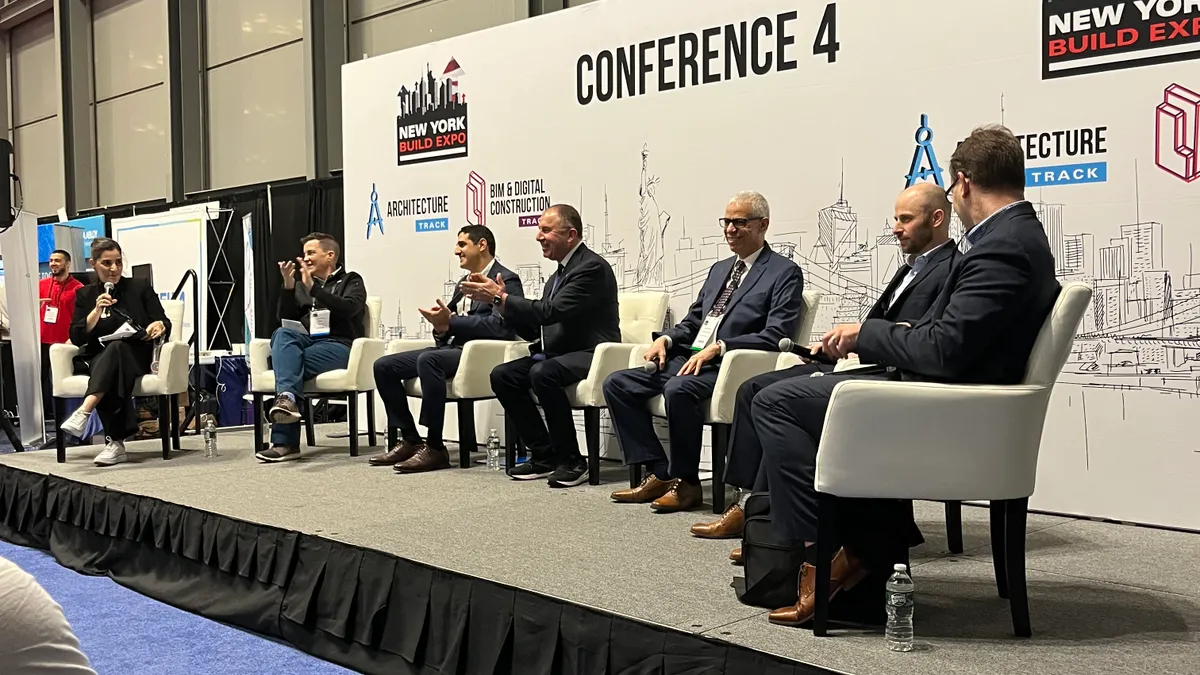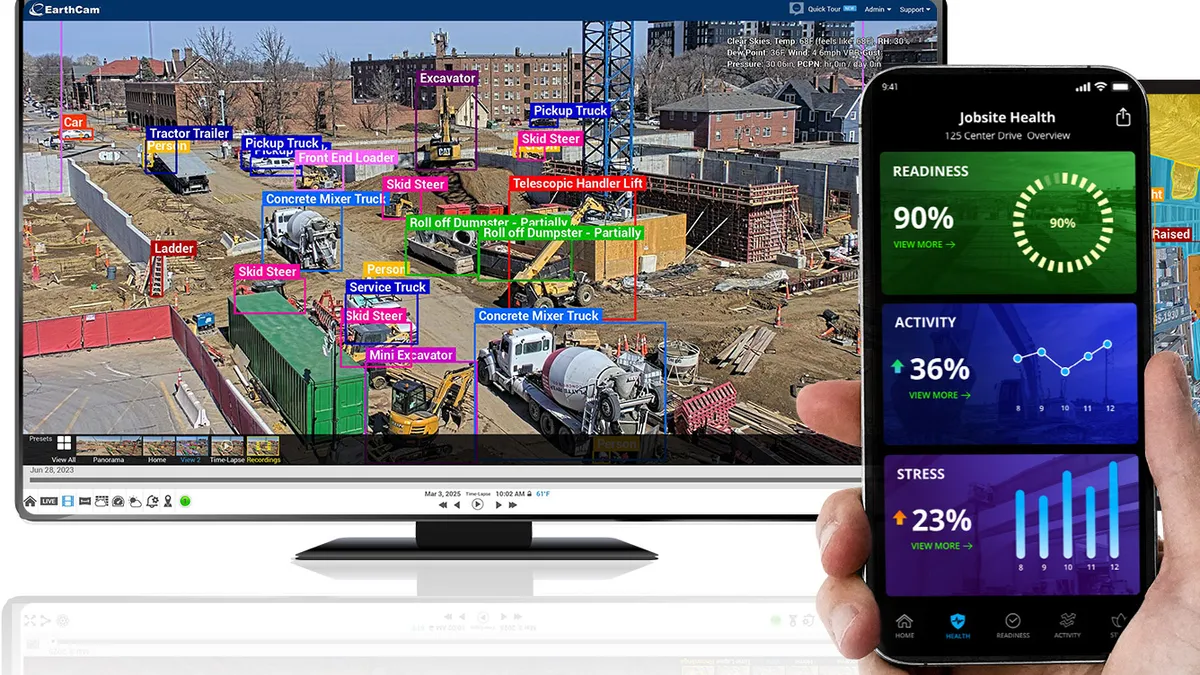Construction executives pinpointed a shift from lagging to leading safety indicators enabled by technology during a 2023 New York Build Conference panel session.
“When it comes to safety, we only think of it when something happens. Those indicators are lagging safety indicators in the accident,” said Mark Drozdov, an environmental health and safety industry expert and university professor at The Cooper Union, a New York City-based private college. “The fact is, it’s the leading indicators that we need to focus on. I was very impressed by some of the technology that’s available out there on those specifically.”
The construction industry traditionally analyzes labor safety in terms of total recordable incident or experience modifier rates. That’s an issue, because both of those ratings look backward at accidents, and are not the best way to prevent future accidents, said Drozdov.
“Our industry is used to evaluating numbers that really represent events that already took place,” said Dana Kfir, director of customer success at Otoos, a New York-based artificial intelligence firm. “Safety, unfortunately, is looked at as a checkbox, you have to just do compliance and that’s it.”
Leading safety indicators
That could soon change as contractors increasingly explore technology that identifies leading safety indicators — ones that look into the future with an eye toward prevention — at jobsites.
For example, Otoos uses algorithms to identify high risk behavior patterns beforehand and automates proactive safety decisions in real time, according to Kfir. The product collects data from on site via mobile apps, sensors and smart cameras. The technology helps teams foster a culture of safety, quality control and data driven decision-making, said Kfir.
Data collection via apps, cameras and sensors marks the initial step in understanding why accidents happen, said Kyle Becker, director of construction at Carmel Partners, a San Francisco-based real estate investment management company.
Yet combining meaningful data from a wide range of sources into actionable takeaways, and then sending those results to a construction team open to adapt its methodology, remains the most challenging aspect of using labor safety-focused technology, said Becker.
“You’re not going to get where you need to be unless people are committed to the process and feeding in good data,” said Becker. “Then you can really learn and understand what you’re doing well on that project and evaluate your jobsites and your subcontractors, not just based on ratings or some other criteria, but on live data that you’re feeding into a system.”
A sea of data
Nevertheless, those leading accident indicators are moving targets, said Linda Martin, principal at Boston-based construction safety consultancy KLME Martin Associates.
She added while the technology continues to improve, the challenge remains to accurately identify valuable leading indicators. That’s because these behavioral patterns frequently change.
“What usually happens is there’s so many leading indicators you’re looking at, that it’s hard to pick one, or pick two or pick three,” said Martin. “That’s something that technology is doing now, is that they’re bringing all of these leading indicators and they’re making it easier so you can actually gather that data.”
Tracking subs and safety
Getting that piece right is critical, since future use cases of this tech could include leveraging those leading indicators to assess subcontractors’ performance as well, said Becker.
“The next step we see is rolling out safety first and then evaluating the quality of subcontractors,” said Becker. “Let’s evaluate the efficiency of our subcontractors, the speed in which they’re moving at, put metrics to that and allow ourselves to evaluate our decision making that speaks more than just to an EMR. That quantification is that next data point that we’re searching for. That will come naturally as we all buy into it.”
Lastly, data collection also benefits firms during litigation in case an accident does occur, said Michael Rubin, OSHA defense attorney at Greenville, South Carolina-based Ogletree Deakins, a labor and employment law firm.
“Talking to our clients, they’re giving you reasons as to why something happened. They’re saying they’ve done periodic meetings, trainings, things like that. Then you say, ‘okay, where is the paperwork?’ and there is none,” said Rubin. “That’s just not very persuasive. That’s really the dual purpose of technology.”




















